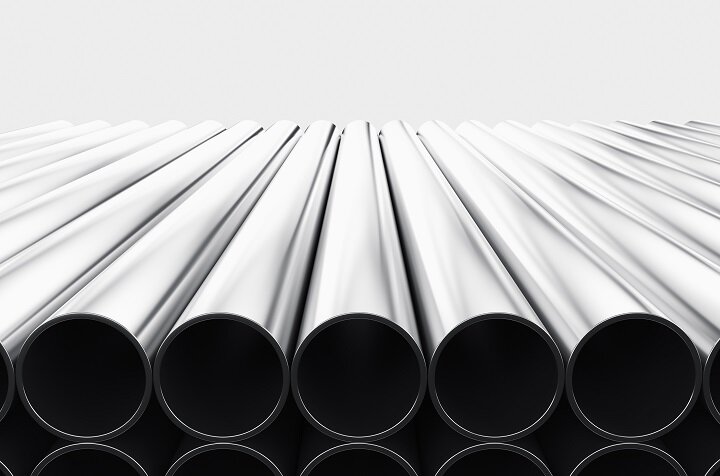- For my project, what kind of pile should I choose?
Please get in touch with ESC Group and let them know about your idea. We are here to help you choose the optimal material choice based on all technical elements, including price. ESC offers pipes with diameters ranging from 21mm to 4267mm and wall thicknesses ranging from 2.1mm to 100mm. SSAW spiral pipe, LSAW pipe, and ERW pipe come in a variety of steel grades, as do the others. More than a million pipe piling tons have been delivered by ESC all over the world.
- What kind and grade of steel pipe is employed in the construction of pile foundations?
To begin, ASTM-A252 specifies how seamless and welded steel pipes used in piling should be manufactured. They can be used as a concrete pile encasement or as a load-bearing pile. Each of the three grades of A-252 pipe has a minimum yield strength of 30 ksi, which is equal to about 207 MPa, and a maximum strength of 35 ksi, which is equal to about 241 MPa (minimum yield of 45 ksi or 310 MPa). Grade 3 is the strongest and is frequently chosen for large-scale piling projects. Contact a pipe pile supplier to know more about the foundation.
- What Friction Pile Is?
The adherence of a friction pile to the mounting soil gives it strength and stability. Because they are not grounded in a rock layer or hard stratum, friction piles are also known as floating piles. These piles use friction to transfer loads from and to the earth along their whole driven height and cylindrical surface. They are ideal for areas with deep, hard soil layers that are difficult to access economically or practically.
The length of a friction pile determines how much weight it can support. Because they cut through and do not push away surrounding soil, open-ended pipe piles have the best bearing capacity.
- End-bearing pile – What Is It and How Do You Use It?
Bottom of the end-bearing pile is anchored into rock or extremely dense soil. The majority of the pile’s load-bearing capacity develops near the toe of the pile. Instead of transferring loads to the softer higher soil layers, these piles do so directly to the stable strata where they sit. They provide the same functions as columns. Large and massive structures are supported by end-bearing piles.
- Plugging- What Is It and How to Prevent It?
Understanding and avoiding plugging is key to a healthy relationship with technology.
A soil column forms inside the pile when open-end pipes are driven. With increasing depth, the soil cylinder produces enough resistance to block further soil infiltration, resulting in a “plugged” pipe pile.
Periodic drilling or airlift removal of soil blocks can help with driving. Without this, removal is unnecessary since it will be filled with nothing but dirt. Even if the plug is not removed, the hole can be filled or grouted unless the design forbids it. Because of soil plugs, the pipe pile now behaves like a closed-end pile, which is a major source of concern.
- Closing-end Pipe Piles Serve What Purpose? When Do They Come In Handy?
Depending on the need for bearing capacity, piles are either closed with a flat plate or a conical tip. Close-ended pipe piles behave like displacement piles, but they also work well as friction piles, especially in sands that aren’t too dense. Pipe piles can be used as high-capacity end-bearing piles whether they are driven open-ended or closed-ended.
An easily-fabricated flat plate can be used as an end closure when driving pipe piles into non-obstructive materials. It is suggested, however, to use conical-pointed tips when penetrating soil strata with large pebbles or boulders. An impediment or a hard stratum is approached at a straight angle while using a 60-degree conical point. The sharp tip protects the piling toe from distortion when driving in severe conditions thanks to its reliable design.
Contact a Pipe pile supplier at International Pipes in OKC. We are here to provide you with quality pipes.

